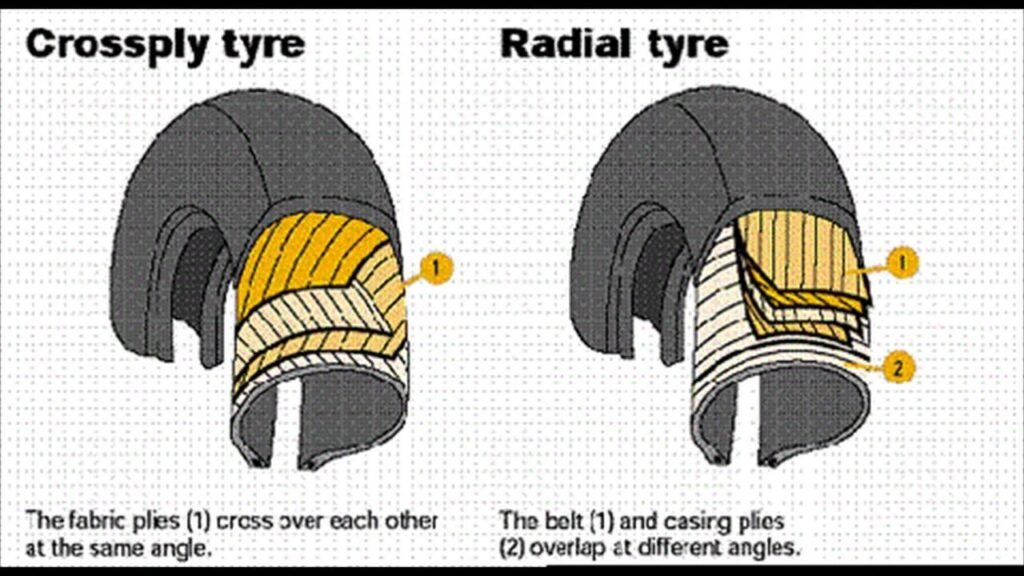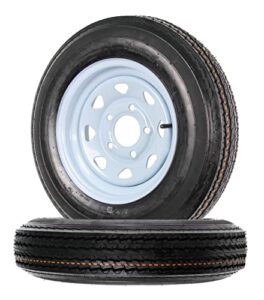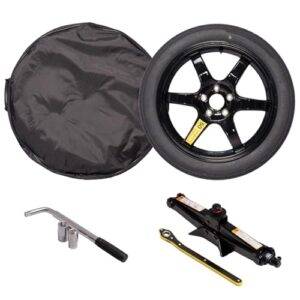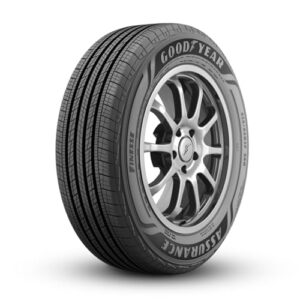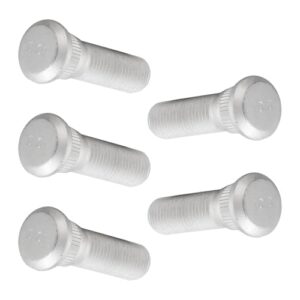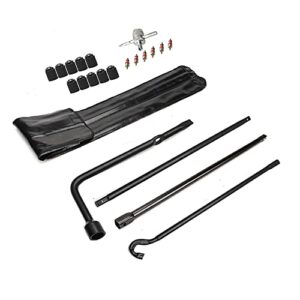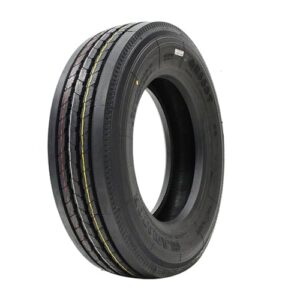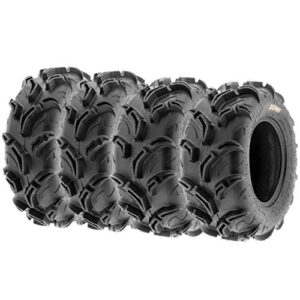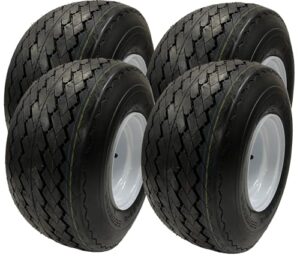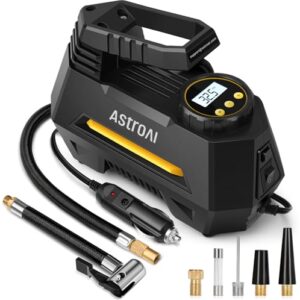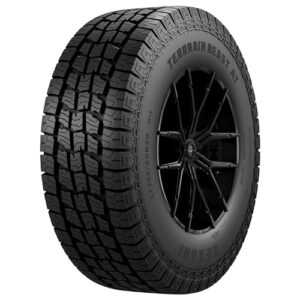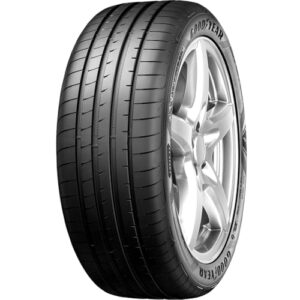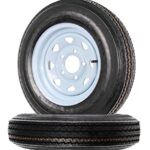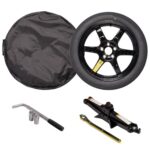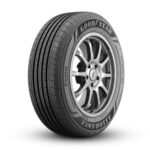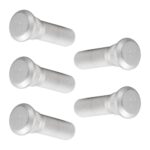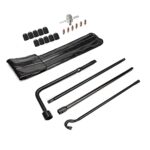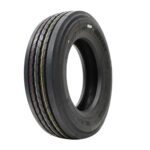Radial tires offer better fuel efficiency and longer tread life. They also provide improved handling and a smoother ride.
Radial tires have revolutionized the automotive industry with their advanced design and numerous benefits. These tires feature a unique construction where the cords run perpendicular to the direction of travel. This design reduces rolling resistance, leading to better fuel efficiency.
Radial tires also boast longer tread life due to even distribution of pressure across the tire’s footprint. Drivers experience increased handling and a smoother ride thanks to the flexible sidewalls, which absorb shocks and road imperfections. With these advantages, radial tires have become the preferred choice for many vehicle owners seeking performance and durability.
Introduction To Radial Tires
Radial tires have revolutionized the automotive industry. They provide better performance and safety. Understanding their advantages helps in making informed choices.
Brief History
Radial tires were first introduced in 1946 by Michelin. They quickly gained popularity due to their superior features. By the 1970s, many car manufacturers adopted them.
Today, radial tires dominate the market. They are preferred for their durability and efficiency.
Basic Structure
Radial tires have a unique construction. Their cords are arranged at 90 degrees to the direction of travel. This design improves flexibility and traction.
The sidewalls and tread operate independently. This reduces heat build-up and extends tire life.
| Feature | Benefit |
|---|---|
| Flexible Sidewalls | Better grip and ride comfort |
| Independent Tread | Reduced heat and longer life |
| Steel Belts | Increased strength and stability |
- Durability: Radial tires last longer.
- Fuel Efficiency: They reduce rolling resistance.
- Safety: Better control and stability.
- Improved performance
- Cost-effective in the long run
- Improved driving experience
Improved Durability
Radial tires are known for their improved durability, making them a popular choice for many drivers. Their superior design and material composition provide several benefits that contribute to their long-lasting performance. Let’s explore some of the key aspects that make radial tires more durable.
Stronger Construction
Radial tires have a unique construction that includes layers of fabric cords. These cords are placed at a 90-degree angle to the direction of travel. This design makes the tires stronger and more resistant to wear and tear.
The steel belts in radial tires add extra strength. These belts help the tires maintain their shape and resist punctures. This construction makes radial tires more reliable on various road conditions.
Longevity
Radial tires are designed to last longer than other types of tires. Their strong construction and durable materials contribute to their extended lifespan.
Here are some factors that increase the longevity of radial tires:
- Even tread wear: Radial tires wear evenly, extending their usable life.
- Heat resistance: The materials used in radial tires resist heat, reducing the risk of blowouts.
- Better traction: Radial tires provide better traction, reducing the need for frequent replacements.
| Feature | Benefit |
|---|---|
| Stronger Construction | Resistant to wear and tear |
| Even Tread Wear | Longer lifespan |
| Heat Resistance | Reduces blowout risks |
Choosing radial tires means investing in a product that offers improved durability. This durability ensures a safer and more cost-effective driving experience.
Improved Fuel Efficiency
Radial tires offer many benefits. One key advantage is improved fuel efficiency. These tires help cars use less fuel. This makes them a popular choice for many drivers.
Lower Rolling Resistance
Radial tires have a unique design. They have steel belts inside. This design reduces rolling resistance. Lower rolling resistance means the car needs less energy to move. This helps the engine work less and saves fuel.
Fuel Savings
With radial tires, drivers can save on fuel costs. Lower rolling resistance means fewer trips to the gas station. Over time, these savings add up. Radial tires are a smart choice for budget-conscious drivers.
| Feature | Benefit |
|---|---|
| Lower Rolling Resistance | Improved fuel efficiency |
| Durable Design | Longer tire life |
- Save money on fuel
- Reduce trips to the gas station
- Help the environment

Superior Handling
Radial tires offer superior handling for your vehicle. This type of tire provides better control and safety. Let’s explore how radial tires improve handling.
Better Grip
Radial tires have a unique design. They have steel belts that run at a 90-degree angle to the tread line. This design offers a wider footprint. A wider footprint means better grip on the road. With better grip, the vehicle can stop faster. It also helps in taking sharp turns safely. Radial tires provide a comfortable ride as well.
Increased Stability
Radial tires contribute to the car’s increased stability. The sidewalls of radial tires are more flexible. This flexibility allows the tire to absorb shocks from bumps. It keeps the vehicle stable on uneven roads. Increased stability means less wear and tear on the suspension. It also means better fuel efficiency.
| Feature | Benefit |
|---|---|
| Better Grip | Improved stopping and cornering |
| Improved Stability | Smoother ride and better fuel efficiency |
Increased Comfort
Radial tires have revolutionized the driving experience by offering numerous advantages. One significant benefit is increased comfort. These tires are designed to improve the overall driving experience, making your journeys smoother and more pleasant.
Smoother Ride
Radial tires provide a smoother ride compared to traditional bias-ply tires. Their unique construction allows for better shock absorption. This means that bumps and potholes are less noticeable. The tire’s flexibility ensures it adapts to road irregularities, giving you a comfortable ride.
Reduced Vibration
One of the standout features of radial tires is reduced vibration. The advanced design minimizes the vibrations felt inside the vehicle. This results in a quieter and more serene driving experience. Lower vibration levels also mean less wear and tear on the vehicle’s suspension system.
| Aspect | Bias-Ply Tires | Radial Tires |
|---|---|---|
| Ride Quality | Stiff and rough | Smooth and comfortable |
| Vibration | Higher | Lower |
| Shock Absorption | Poor | Excellent |
These improvements in comfort not only increase the driving experience but also contribute to better vehicle performance and longevity.
Cost-effectiveness
Radial tires offer significant cost-effectiveness. They provide long-term savings and require lower maintenance. These benefits make them a smart investment for vehicle owners.
Long-term Savings
Radial tires last longer than traditional bias-ply tires. They have a more durable construction. This means fewer replacements over time. A table below highlights the cost comparison between radial and bias-ply tires:
| Tire Type | Average Lifespan (Miles) | Cost per Tire ($) | Cost per Mile ($) |
|---|---|---|---|
| Radial Tires | 60,000 | 120 | 0.002 |
| Bias-Ply Tires | 30,000 | 80 | 0.0027 |
Radial tires offer better cost per mile. This makes them more economical.
Lower Maintenance
Radial tires require less maintenance. Their construction reduces wear and tear. This means fewer trips to the mechanic. Key reasons include:
- Better heat dissipation: Radial tires run cooler. This reduces the risk of blowouts.
- Improved tread life: The even distribution of pressure extends tread life.
- Improved fuel efficiency: Less rolling resistance means better fuel economy.
Less maintenance equals less spending on repairs and replacements. Radial tires prove to be a wise choice for those wanting to save money.
Environmental Benefits
Radial tires offer many environmental benefits. These tires help in reducing harmful emissions and use eco-friendly materials. Let’s dive into the details.
Reduced Emissions
Radial tires have a unique design. This design reduces rolling resistance. Lower rolling resistance means less fuel is needed to move the vehicle. This leads to lower carbon dioxide emissions. In short, radial tires help in reducing the carbon footprint.
Eco-friendly Materials
Radial tires are made from sustainable materials. These materials are less harmful to the environment. Many radial tires use recycled rubber. This reduces waste and promotes recycling. Some tires also use natural rubber. This makes them biodegradable. Using radial tires is a step towards a greener planet.

Choosing The Right Radial Tires
Choosing the right radial tires ensures safety and increases driving experience. Radial tires are known for their durability and performance. They offer improved traction and fuel efficiency.
Factors To Consider
Several factors influence the choice of radial tires. Consider these key points:
- Tire Size: Ensure the tire size matches your vehicle’s specifications.
- Load Rating: Check the load rating to support your vehicle’s weight.
- Speed Rating: Choose a speed rating suitable for your driving habits.
- Tread Pattern: Select a tread pattern based on your driving conditions.
- Price: Find a balance between cost and quality.
Top Brands
Several brands are renowned for producing high-quality radial tires. Here are some of the best:
| Brand | Key Features |
|---|---|
| Michelin | Known for durability and fuel efficiency |
| Bridgestone | Offers excellent traction and performance |
| Goodyear | Renowned for safety and comfort |
| Continental | Provides superior handling and longevity |
These brands offer a variety of radial tires for different needs. Make an informed decision based on your driving requirements.

Frequently Asked Questions
What Is A Disadvantage Of A Radial Tire?
A disadvantage of radial tires is their stiff sidewalls, which can reduce ride comfort and increase road noise.
What Is The Life Expectancy Of Radial Tires?
Radial tires typically last between 40,000 to 70,000 miles. Proper maintenance and driving habits can extend their lifespan. Regularly check tire pressure and alignment.
What Are Radial Tires Used For?
Radial tires are used for better fuel efficiency, longer tread life, and improved handling. They provide a smoother ride and increased traction. Perfect for both passenger vehicles and trucks, they offer superior performance on highways and city roads.
What Is The Main Advantage Of A Radial Tire Over A Bias Ply Tire?
The main advantage of a radial tire over a bias ply tire is improved fuel efficiency and better traction. Radial tires offer a smoother ride and longer tread life, enhancing overall vehicle performance.
Conclusion
Radial tires offer superior traction, improved fuel efficiency, and longer lifespan. They improve driving comfort and safety. Switching to radial tires can save money in the long run. Make the smart choice for your vehicle and enjoy a smoother ride.
Consider radial tires for their numerous benefits and improved performance.


